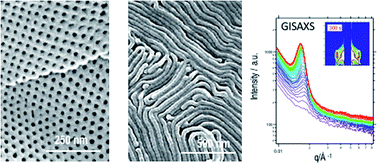Carboxyl-functionalized nanochannels based on block copolymer hierarchical structures
Abstract
When building artificial nanochannels, having a scalable robust platform with controlled morphology is important, as well as having the option for final functionalization of the channels for the selective transport of water and proteins. We have previously developed asymmetric membranes that have a surface layer of very sharp pore size distribution, surface charge and pore functionalization. Here, a more complex bioinspired platform is reported. Hierarchical isotropic porous structures with spherical micrometer-sized cavities, interconnected by hexagonally ordered nanochannels, were prepared based on the phase separation of polystyrene-b-poly(t-butyl acrylate) block copolymers, following a nucleation and growth mechanism. The structure was imaged by scanning electron microscopy, which demonstrated a high density of ordered nanochannels. The hexagonal order formed by the self-assembly in solution was confirmed by small-angle X-ray scattering. The structure evolution was investigated by time-resolved grazing-incidence small-angle X-ray scattering. The assembled hydrophobic hierarchical structure was then converted to a hydrophilic structure by acid hydrolysis, leading to nanochannels covered by carboxylic groups and therefore convenient for water transport.

- This article is part of the themed collection: Artificial Water Channels


 Please wait while we load your content...
Please wait while we load your content...